Writing Teaching Resources
Teaching writing strategies and the writing process this school year? Explore a comprehensive collection of teacher resources for primary English teachers — all created by teachers!
Stocked with graphic organisers, writing prompts, templates, worksheets and so much more, this collection of printable and digital activities is designed to help you as you help your students become more effective communicators and unleash their creativity and imagination.
Save time on lesson planning with resources that are aligned with the Australian curriculum (including version 9!) and have been through a careful review process by an expert member of our teacher team to ensure they're ready for your classroom and your students!
Are you looking for tips and tricks to add to your teacher toolkit this school year? Read on for a primer from our teacher team, including engaging activities for teaching writing inprimary school and a look at some of the different writing strategies your students will need to learn.
11 Writing Strategies Kids Should Know by the End of Primary School
We can't talk about teaching kids to write without talking about the different writing strategies that can help them do just that!
When it comes to teaching our students to become confident writers who articulate their ideas effectively, here are some of the strategies our teacher team prioritises:
1. Brainstorming
Brainstorming is something we often do in the classroom, and it's a crucial part of learning to generate the ideas that will drive students' writing as they progress through their educational journey. Kids should know how to create a list of potential topics or points related to a particular writing assignment.
With younger students, this is often done as a whole group by writing ideas and points on chart paper. In upper years, students transition over to using text-based materials to generate ideas and talking points.
2. Outlining
Before diving directly into any assignment, our students should be able to create a structured framework or outline. Teaching students how to create this outline will help them organise their thoughts and arguments for penning their essays, reports and research papers.

3. Using Graphic Organisers
Technically graphic organisers are classroom tools, so you may not think of their use as a writing strategy per se. However, learning to use these tools is another means of providing kids with the tools they need to organize their ideas and information before they sit down to write.
These organisers are particularly useful for expository writing — students can use them to outline main ideas, supporting details, and transitions.
Students can also take advantage of story maps when they are working on narrative writing to plot the key elements of a story, such as characters, setting, conflict, rising action, climax and resolution.
Graphic organisers such as the OREO strategy and hamburger paragraph are also great tools for students to use when working with opinion and persuasive texts.
4. Freewriting
Writer's block is the enemy of creativity, and it can easily frustrate young students who don't know where to begin.
When students freewrite, they write continuously without worrying about grammar or punctuation. This writing strategy can be extremely freeing — hence the name! — and helps frustrated writers move past that writer's block, generating fresh ideas.

5. Peer Editing
Learning to review and provide constructive feedback on each other's work is a great writing strategy to employ in your classroom to help students improve their writing quality and enhance their editing skills.
The strategy allows your students to learn from one another, and it arms them with an important tool they can use well into the future — calling on peers to provide a critical eye to a piece of writing.
6. Using Sensory Language
Working on descriptive writing? With this writing strategy, students engage the reader's senses through vivid and sensory language to create a more immersive experience.
7. Including Transitions and Connectives
As students become more proficient in the writing process, learning to use transitional words and phrases allows them to create smooth transitions between sentences and paragraphs. This strategy makes their writing more coherent and polished.
8. Incorporating Evidence
In persuasive, opinion and expository writing, students are taught to support their claims with evidence and examples to strengthen their arguments.
It takes some practice to train your students to use evidence in their writing, so it's often a good idea to start with something simple, like the R.A.C.E.S. strategy.
9. Crafting a Thesis Statement
In expository, opinion and persuasive writing, crafting clear and concise thesis statements that summarise the main point or argument of their essay helps students be more focused and organised in their writing.
This strategy can also have the effect of empowering students to express their ideas confidently and persuasively.
10. Incorporating Introductions and Conclusions
With this strategy, students practice crafting effective introductions and conclusions that grab the reader's attention and leave a lasting impression.
11. Following a Revision Checklist
Teaching your students to use a revision checklist is a strategy that will help them be more self-reflective, evaluating their own writing against the checklist criteria and becoming more aware of their strengths and weaknesses.

- Plus Plan
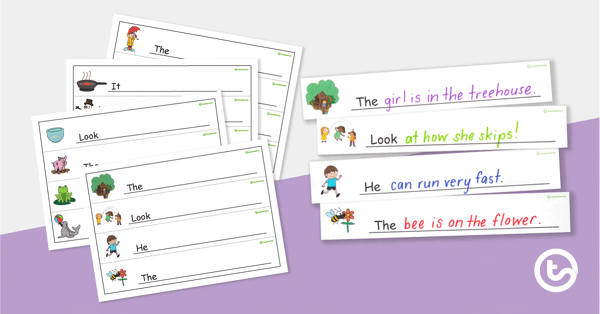
Sentence Starter Strips
A set of sentence starter prompts for students to practise writing short sentences.
- Plus Plan
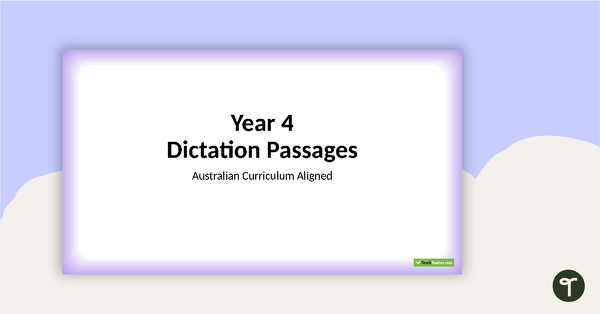
Year 4 Dictation Passages PowerPoint
Use this set of Year 4 dictation passages to promote listening and transcription skills in your students.
- Plus Plan
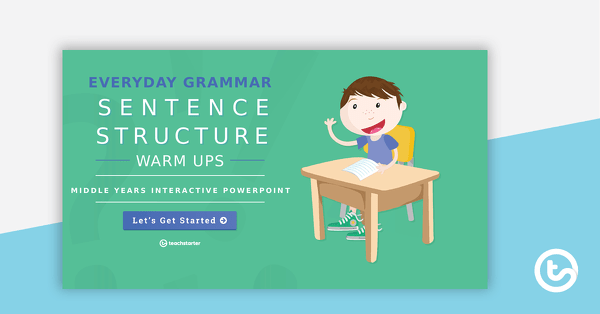
Everyday Grammar Sentence Structure Warm Ups - Middle Years Interactive PowerPoint
An engaging 44 slide interactive PowerPoint to use in the middle years classroom when learning about grammar and sentence structure.
- Plus Plan
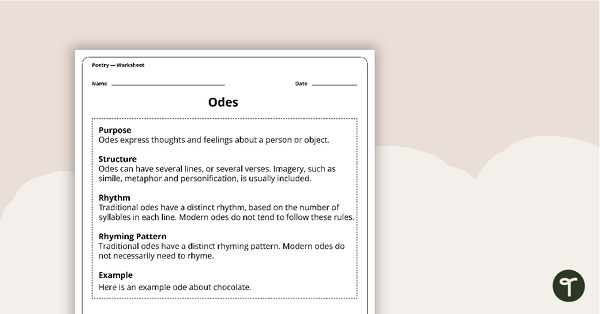
Write an Ode Worksheet
Set your students up for success when writing an ode with this set of scaffolded, easy-to-follow worksheets.
- Plus Plan
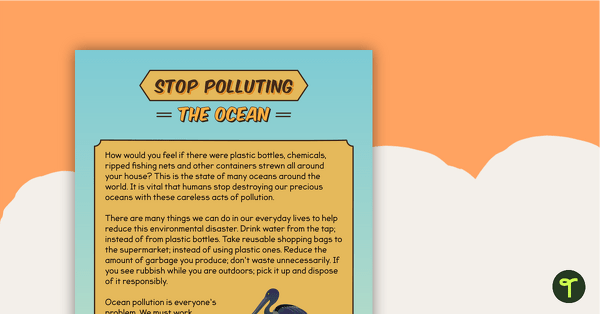
Sequencing Activity - Stop Polluting The Ocean (Persuasive Text)
A sequencing task using a persuasive text.
- Plus Plan
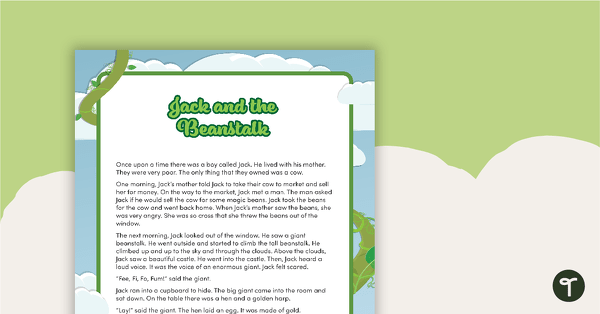
Capital Letter and Full Stop Scavenger Hunt Worksheet
A reading passage and 2 engaging worksheets that explore the importance of capital letters and full stops.
- Plus Plan
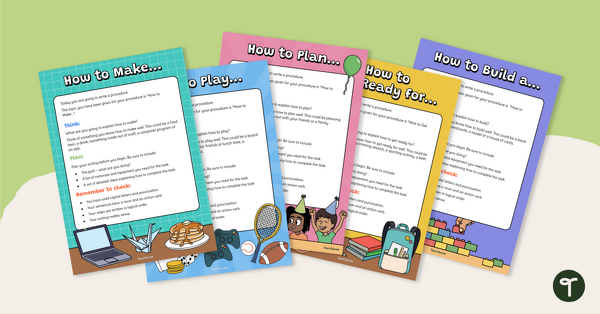
5 Procedural Writing Prompts
Use this set of 5 procedural writing prompts to assess your students’ procedural writing skills.
- Plus Plan
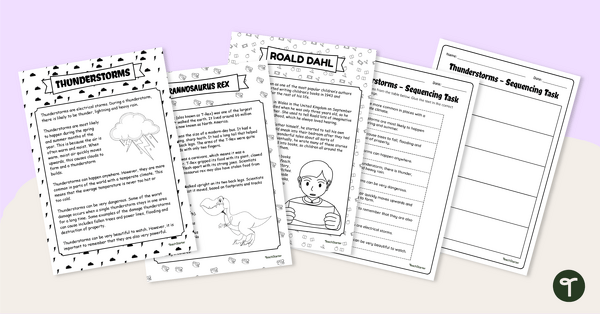
Sequence an Information Report – Cut and Paste Worksheets
Use these information report examples to teach your students about sequencing facts in a logical order.
- Plus Plan
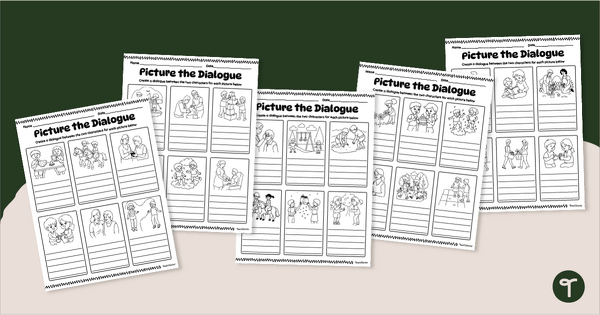
Picture the Dialogue - Quotation Mark Printables
Improve students’ abilities to write dialogue using correct punctuation with a set of ‘Picture the Dialogue’ writing worksheets.
- Plus Plan
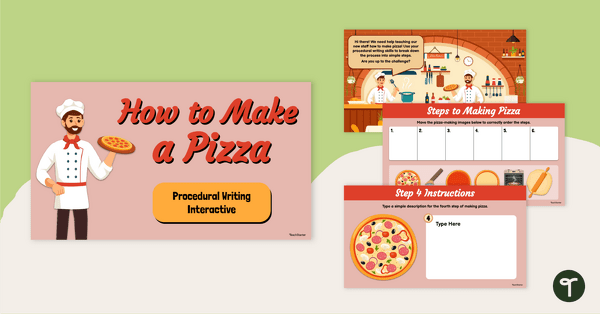
How to Make a Pizza Interactive Activity
Use this “How to Make a Pizza” procedural writing interactive activity to model the purpose, structural elements and language features of procedure texts.
- Plus Plan

Rhetorical Questions Interactive Activity
Explore rhetorical questions with your students using this digital game perfect for your persuasive writing lessons.
- Plus Plan
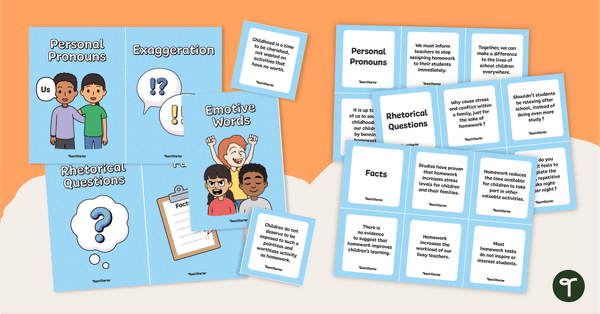
Persuasive Devices Sorting Activity
Explore persuasive devices with your students using this set of sorting cards.
- Plus Plan

Grammar and Punctuation Assessment Tool – Year 3
A set of 5 grammar and punctuation assessment tools suited to Year 3 students.
- Free Plan
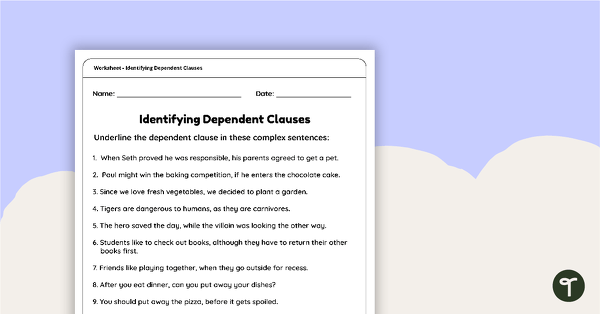
Identifying Dependent Clauses Worksheet
Practise identifying dependent clauses in complex sentences with a dependent clause worksheet.
- Free Plan

The Enigma of AX29 - Narrative Plot Worksheet
Explore the features of narrative plot structure with this gripping science fiction story.
- Plus Plan
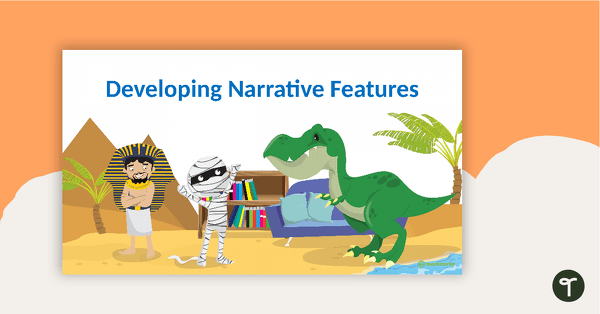
Developing Narrative Features PowerPoint - Year 5 and Year 6
A 26 slide editable PowerPoint template to use when teaching your students about the features of narrative texts.
- Plus Plan
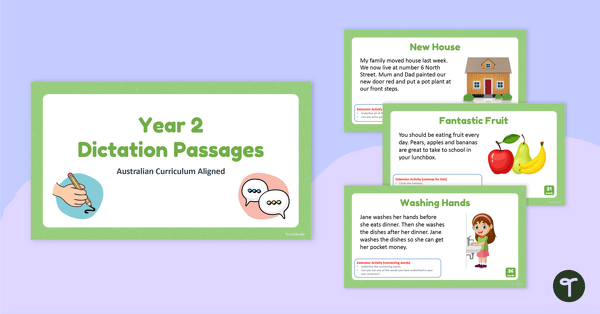
Year 2 Dictation Passages PowerPoint
Use this set of Year 2 dictation passages to promote listening and transcription skills in your students.
- Plus Plan
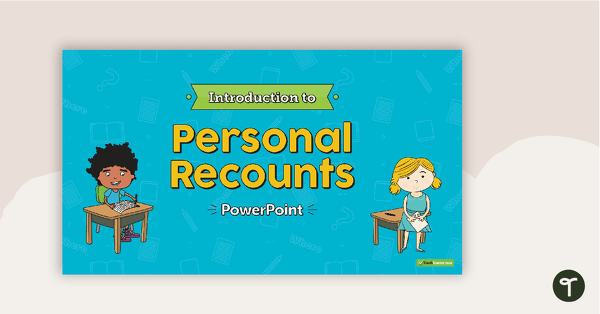
Introduction to Personal Recounts PowerPoint
An 18 slide editable PowerPoint template to use when teaching younger students about the structure and language features of personal recounts.
- Plus Plan
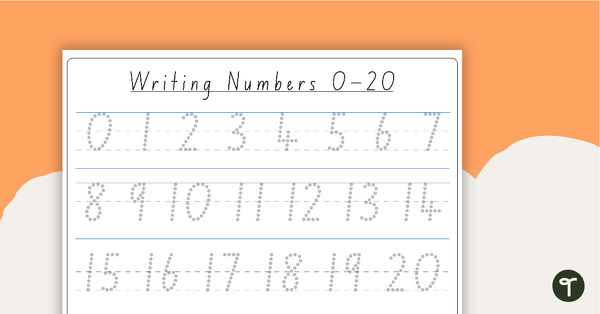
Dotted Numbers 0-20 Handwriting Sheet
Get your students writing numbers from 0-20 with this number formation worksheet available in Australian school fonts.
- Plus Plan
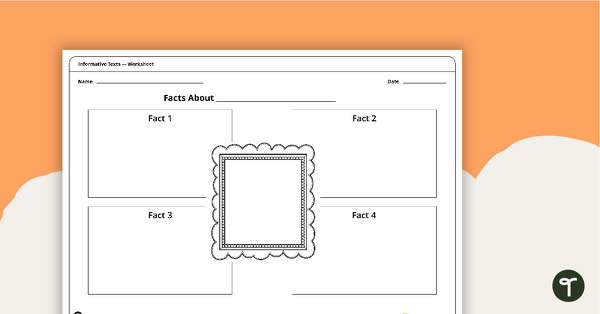
Build a Fact File Worksheet
Use this fact file template as a research tool when teaching factual writing to your students.
- Plus Plan
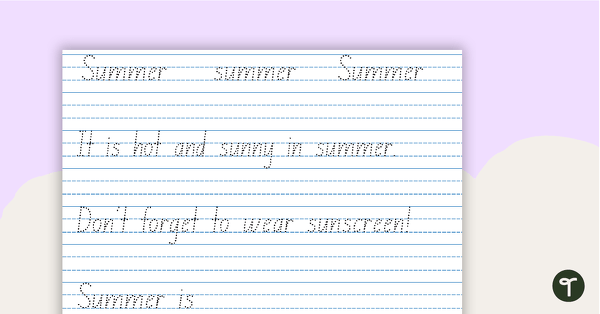
Season Handwriting Sheets
Handwriting sheets about the seasons.
- Free Plan
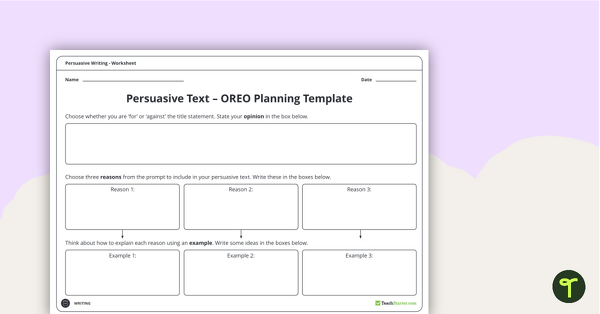
Persuasive Text Planning Template (Using OREO)
A planning template for students to use when writing a persuasive text.
- Free Plan
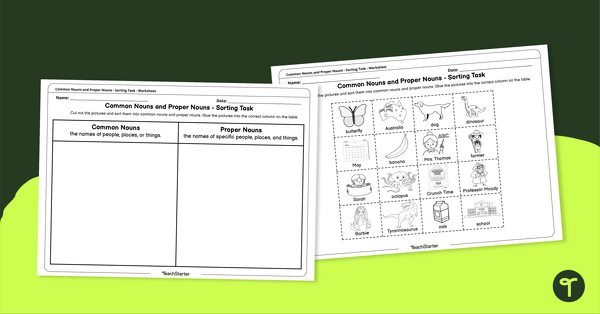
Common Nouns and Proper Nouns - Sorting Task
A sorting task to help students learn the difference between common nouns and proper nouns.
- Free Plan
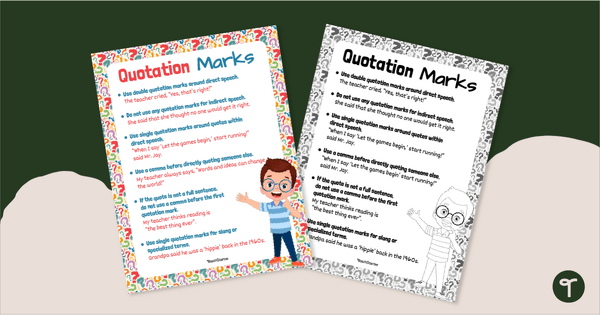
Quotation Marks Poster - Single and Double
Display the rules for using single and double speech marks using a printable Quotation Marks Anchor Chart.
- Plus Plan
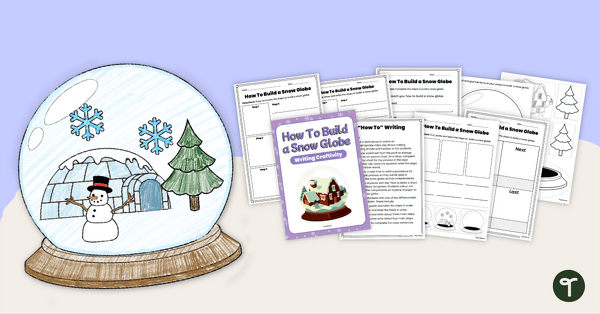
How To Build a Snow Globe – Procedural Writing Craftivity
Use this engaging, hands-on snow globe craftivity to teach your students all they need to know about procedural writing!
- Plus Plan
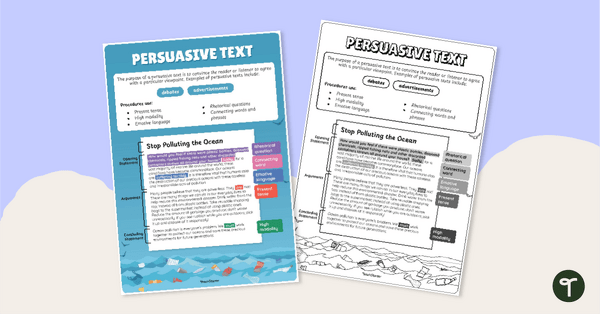
Persuasive Text Type Poster With Annotations
Display this Persuasive text with annotations to help students identify the structure of this type of text.
- Plus Plan
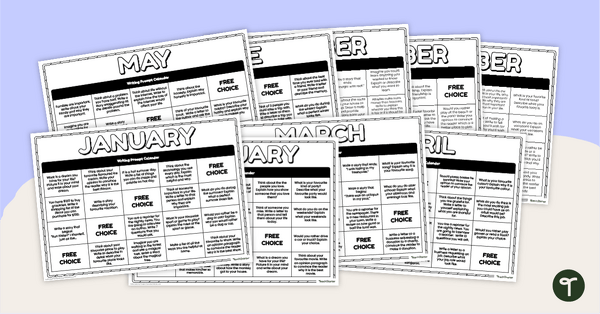
Daily Writing Prompts Calendars - Upper Primary
Inspire your students and encourage them to write regularly with a set of printable Daily Writing Prompts in calendar format.
- Plus Plan
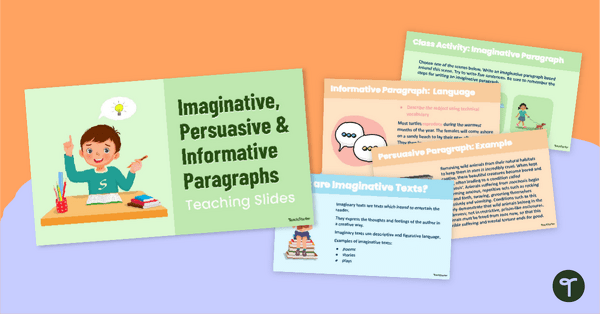
Imaginative, Persuasive and Informative Paragraphs Teaching Slides
Learn about the different structures of imaginative, persuasive and informative paragraphs.
- Plus Plan

Persuasive Devices Crossword
Familiarise your students with the most common persuasive devices with an engaging crossword puzzle.
- Plus Plan
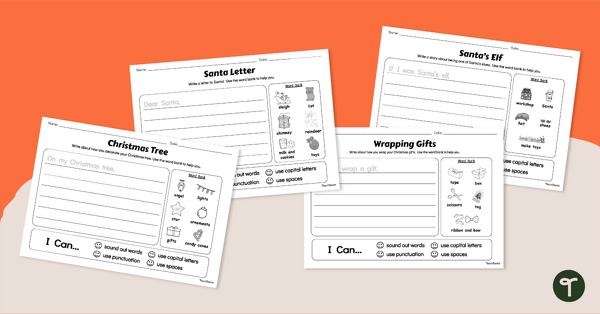
Christmas Writing Prompts for Beginning Writers
Celebrate Christmas time and practise those writing skills with your beginner writers.
- Plus Plan
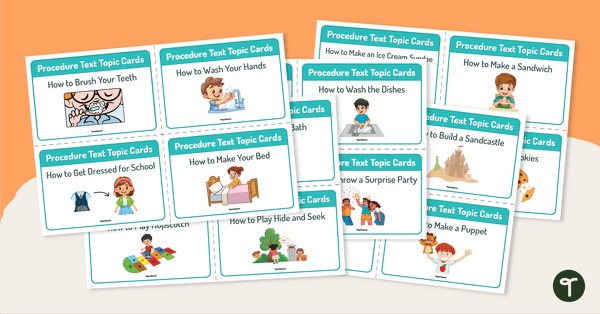
Procedure Text Topic Cards
Use these ideas for procedure writing with your students to help them hone their procedural writing skills.
- Free Plan
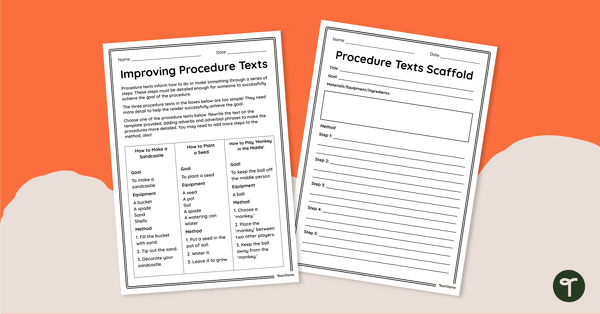
Bumping-Up Procedure Texts Worksheet
Download these procedural writing worksheets to get your students bumping-up some simple procedure texts.
- Writing Worksheets
- Writing Templates
- Writing Games
- Writing Posters
- Writing Teaching Presentations
- Writing Labels, Signs & Decorations
- Writing Word Walls
- Writing Projects
- Writing for Preschool/Kindergarten
- Writing for Foundation Year
- Writing for Year 1
- Writing for Year 2
- Writing for Year 3
- Writing for Year 4
- Writing for Year 5
- Writing for Year 6
- Writing for Year 7